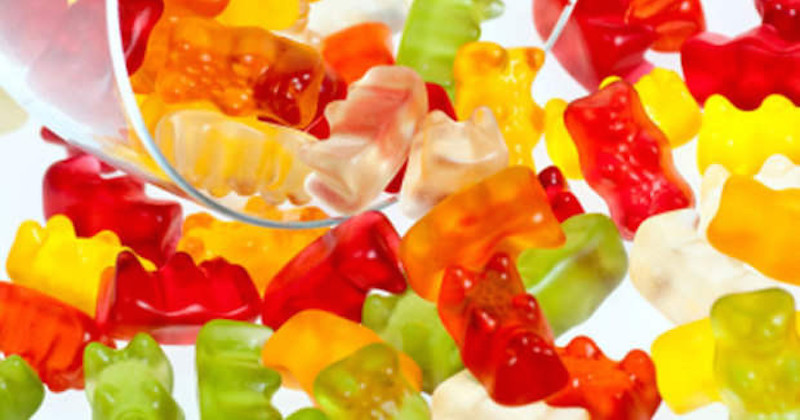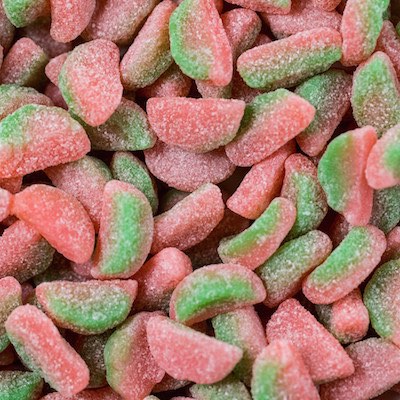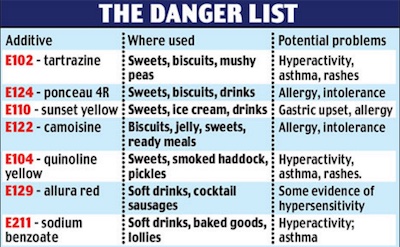Cancer-Causing Candy Brands That Must Never Come Near Your Children’s Mouth
Last updated on
Candy comes in all different shapes and sizes. Candy can be hard, like a lollipop, or tough and chewy like Laffy Taffy. One of the most popular types of candy among children these days are the soft, gummy candies that are filled with and covered in sugar.
Throughout the last 20 years, an abundance of these candies started popping up in many different varieties. Fruit Gushers, Swedish Berries, Sour Patch Kids, Fuzzy Peach and Sour Cherry Blasters are just a few of these different types of candies, most of which are produced by Maynard’s.

These candies are marketed towards children and follow a common theme of being “fruity” or “sour”. Although everybody knows that candy is bad for you, these types of candies are way ahead of the pack when it comes to the harm that they can do to you.
They are especially dangerous since they are so heavily marketed towards children, and if you are a parent it would be a good idea to heavily limit your child’s consumption of this type of candy, as it wreaks havoc on your body the moment you put it into your mouth.
Here is what these types of candy do to your body as soon as you eat them.
Stay Away From These Health-Damaging, Cancer-Causing Candy Brands
Causes Tooth Decay And Gum Damage
According to Dr. Carlos Meulner, eating these types of “sour” or “fruity” candies is one of the worst things you can do to yourself in terms of oral health.
Citing a study conducted by the Minnesota Dental Association, “Some of these sour candies are almost as bad for your teeth as battery acid!”

Acid also weakens protective tooth enamel and causes it to wear away. Teeth that don’t have this protective enamel are more prone to tooth decay and the various diseases and conditions that come along with it.
The acid attacks that are caused by this type of candy can last for up to 20 minutes, and are prolonged by keeping the candy in the mouth, during either sucking or chewing.
When tooth enamel wears away, your teeth will become more sensitive and you may feel pain when consuming very cold, hot or sweet drinks. Discoloration, transparency, rounding, cracks, dents and roughness are all signs of tooth erosion.
The best way to avoid this from happening is to completely stop eating these types of candies. If you insist on eating them follow these tips to reduce the amount of damage they cause to your teeth:
- Don’t suck or chew on them for long periods of time
- Rinse your mouth with water or milk, or eat cheese afterwards to neutralize the acid
- Chew sugar-free gum to produce excess saliva with protects your tooth enamel
- Wait one hour after eating candy to brush teeth, as brushing right after can cause further damage
Raises Blood Sugar
This may come as no surprise to most people, but these types of candies are incredibly efficient at raising blood sugar. Although this may be beneficial for people with hypoglycemia (low blood sugar), for most people, it’s just another reason to avoid these types of candy.

But, this isn’t the only reason why these types of candies are so good at raising blood sugar. Most of these candies are also made using modified corn starch, which has been proven to maintain blood sugar levels and also results in higher peaks of sugar concentration in the blood.
The combination of incredibly high amounts of sugar and a substance which helps increase and maintain blood sugar levels is what makes these types of candies so harmful.
Contains Cancerous Ingredients
Like most other commercial candy products, these types of candies contain artificial dyes such as Yellow 6, Red 40, Yellow 5 and Blue 1.

James Huff, the associate director for chemical carcinogenesis at the National Institute of Environmental Health Sciences, says that the tests, that were performed on rats, did not provide enough information to come to an accurate conclusion.
He claims that researchers who conducted the study did not keep it going long enough to see the full effects that the dyes had on the rats, and said that there was a possibility that these rats could have been affected by the dyes later on in their lives.
The dyes Red 40, Yellow 5 and Yellow 6 all contain a substance called benzidene. This substance is a known carcinogen to both humans and animals, yet the FDA still allows it to be used in the production of these types of candies.
In 1985 the FDA raised the cancer risk of this benzidene use to just under the “concern” level. However, the FDA only performed tests which examined benzidene’s carcinogenic properties when it is by itself, and not the effects it has on the human body, which led many experts to believe that it poses more of a cancer risk than these tests suggest.
Sources:
https://patch.com/new-jersey/littlesilver/bp–the-effects-of-sour-candies-on-your-teeth
https://www.amazon.com/Sour-Patch-Kids-5-Ounce-Bags/dp/B003WP5JYM
https://www.ncbi.nlm.nih.gov/pmc/articles/PMC3808112/
https://www.ncbi.nlm.nih.gov/pmc/articles/PMC2957945/
Some of the links I post on this site are affiliate links. If you go through them to make a purchase, I will earn a small commission (at no additional cost to you). However, note that I’m recommending these products because of their quality and that I have good experience using them, not because of the commission to be made.

































 JOIN OVER
JOIN OVER
Comments